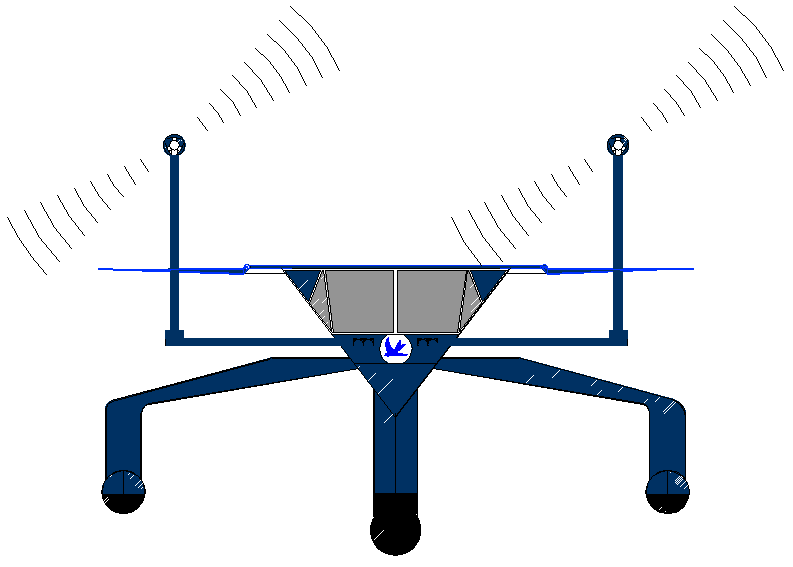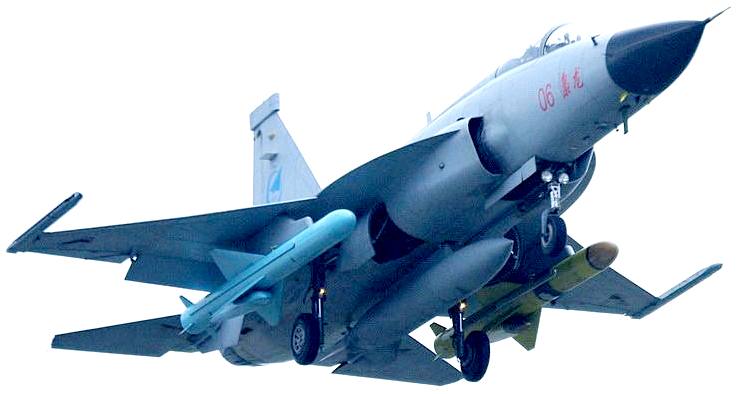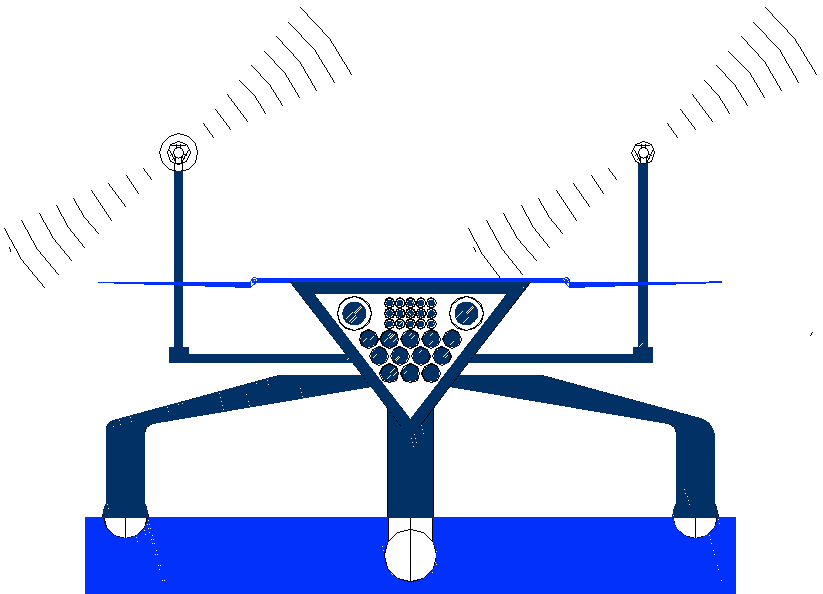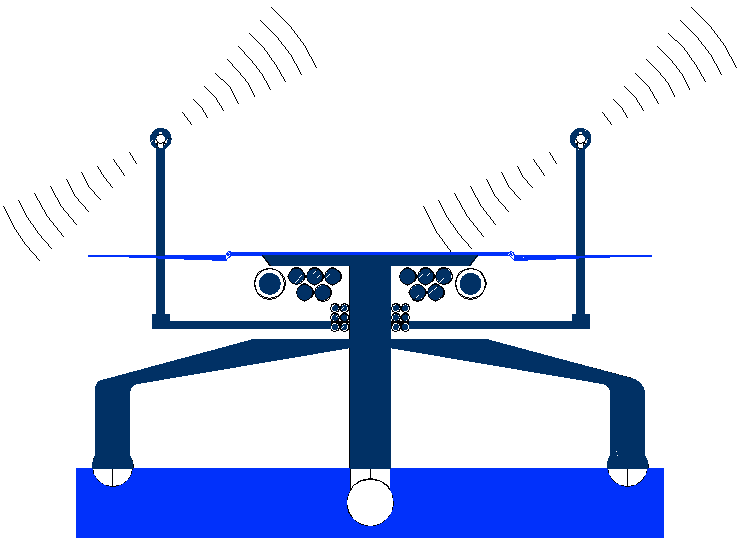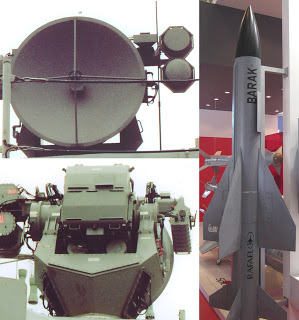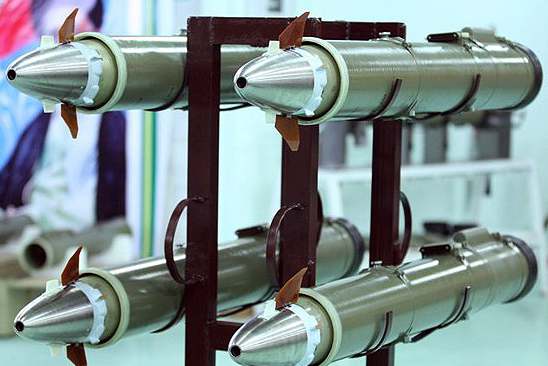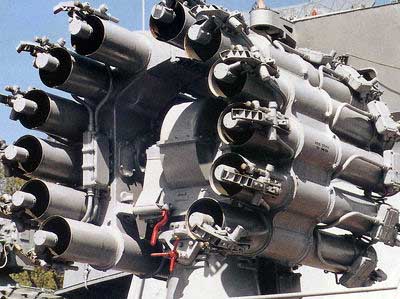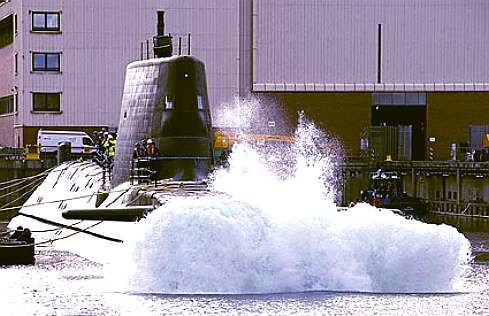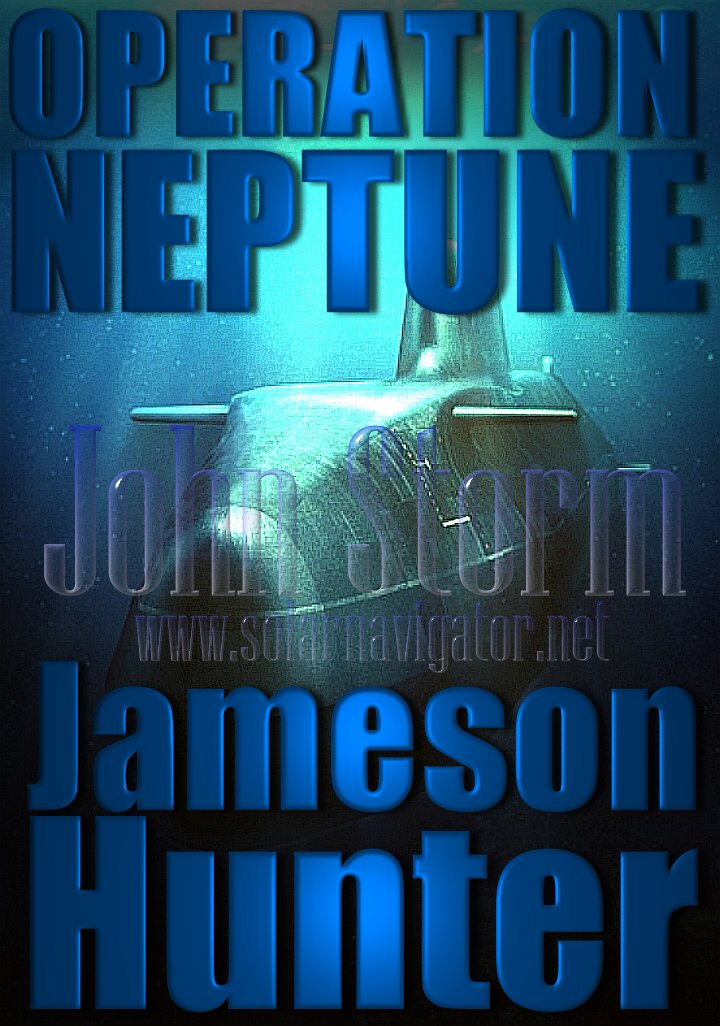|
SEAWOLF™ and the Rules of War, The Geneva Convention
|
||||||||
|
Peacekeeping is about to enter a new age. Robotic navigation has been possible (and used by the military) for a long time. These systems were and still are not COLREGs compliant. A patent has been applied for that changes all that - and so the fight is not against technology, but against the rule makers - who will without doubt be slow to change.
The widespread use of drones during the war on Al Qaeda in the Middle East has generated significant debate about the use of unmanned systems in a combat role in general. We were ourselves concerned at what appeared to be the butchery of a helpless nation using uncontested airspace. Thus, we are treating this subject with the attention it deserves. It may boil down to proportionality - that of course assumes adequate built in command and control safety features to ensure a proportional response.
Most navies around the world already employ many forms of autonomous surface and subsea equipment. ASV Global, Zycraft, Bluefin Robotics and many others manufacture and sell such equipment. The same is true for unmanned aircraft popularly called drones. The gap between such systems and uses is closing fast.
For the purposes of this subject, we are assuming that weaponized unmanned maritime systems of increasing complexity and degree of autonomous operation will be deployed in the future by nearly all countries operating ships, etc. Indeed, that is our mantra. The focus of our analysis will be on the legal compliance as relates to the deployment of Seawolf enabled vessels, two examples of which are depicted below, the robot version a logical development from a reduced crew autonomous ship.
The use of drone aircraft that killed civilians during recent conflicts started the legal ball rolling, with most navies now realizing that robots at sea are both legal and necessary. Conventional research establishments such as the CDE, DSTL and DARPA cannot move fast enough to keep pace with experimental models from SMEs. But, most SMEs are not MOD or NATO approved, never could be and would not want to be so bound - such as to limit potential.
Starting
at the beginning, note that the terms “ship” and “vessel” are synonymous in international
law. For example, the 1982 U.N. Convention on the Law of the Sea (UNCLOS) 9, although it does not define either term, uses them interchangeably.
Also, the International Convention for the Prevention of Pollution
PROHIBITION
Next, neither international treaty nor customary law specifically prohibits the development and use of unmanned systems in military operations. In fact, there is no international law particular to robotic (unmanned) systems at all. There are though other laws applying to war in general that we must observe.
A PLATFORM IS NOT A WEAPON
Where we are concerned with zero carbon transport, we note that the term “weapon” does not include launch or delivery platforms including, but not limited to, ships or aircraft, but rather the weapons or weapon systems contained on those platforms. Thus, development of our platform is not subject to rules of war, only rules of the sea. That said we are keen to take this further for those interested in keeping the peace. Peace bringing economic stability.
CLASSES OF USV/ASV
The seven missions identified in a US ASV Master Plan (in priority order) are:
(1)
Mine Countermeasures (MCM);
Our concept is for “Fleet Class” ships that will be a purpose-built for Seawolf™ convoys. This is a "high-end" surface warfare mission. Variants of the Fleet Class vessel may be used to support MCM Sweep, Protected Passages ASW and other of the seven missions identified above.
GENEVA CONVENTION
CONSIDERATIONS
This imposes a duty on governments to ensure that the applicable rules are complied with. The duty does not apply to us, nevertheless we aim to incorporate failsafe algorithms and other safety features as part of our project development by way of easing the burden on navies considering ways of improving peacekeeping while also reducing the burden to the taxpayer, hence National Debt.
Pakistani fighter-jet aircraft fitted with anti-ship cruise and SAM missiles, not unlike that described for the robot warship development seen below. Autonomous marine robots may carry significantly more missiles and stay at sea on patrol almost indefinitely. There is no quartermaster and no crew to feed, save at onshore control centers.
REASONABLE PRECAUTIONS TO CIVILIAN HARMS
Many involved in conventional operations who may be opposed to new robotic technology, may have overlooked the fact that most accidents boil down to human error, or hot blooded rage. Autonomous warships in a properly developed state hold the potential to reduce such errors - and any deliberate violations that from time to time come to light as war crimes. Rage or temper, is not something a machine is capable of, it simply follows protocol, until put into drone mode - and that is when a human can come along and foul things up. Unfortunately, humans must be in the chain of command, until military robot exercises are conducted to demonstrate their benefits.
PROPORTIONALITY
It is difficult to envision how those who plan or decide upon an attack can fulfill their personal obligation to assess proportionality through and including the execution of the attack without some means of communicating with or controlling the system. This virtually rules out submarines as fully autonomous warships, where when submerged there can be no recovery of control, simply from lack of communication when underwater.
That
does not apply to unmanned surface vessels that may stay in contact with
shore-based human operators, hence may properly be described as
"semi-autonomous" patrols. We will engineer our systems so that where a potential target is discovered, the
autonomous weapon system automatically reverts to drone mode for instructions - save only where fired upon and merely responding
(returning fire) by way of self-preservation. Self-preservation is a
proportional response to being attacked.
These missiles are autonomous weapons, no matter who pushes the firing button. Does it then matter how automated the delivery platform is. Better we say to do battle remotely to save lives. If the delivery platform uses no diesel and has a higher endurance, is that not a good thing. A human is not capable of reacting quickly enough in any event, such as to track and destroy incoming threats.
SEMI AUTONOMOUS
“Fully autonomous” signifies full-scale autonomy, with a weaponized ASV making mission decisions from identification to classification to firing, based on pre-programmed parameters.
ACCEPTING SURRENDER - DUTIES
During naval engagements at sea, combatants are required to take all possible measures, consistent with the security of their forces, to search for and rescue the shipwrecked. “The shipwrecked” means all persons in peril at sea, and would include survivors of a naval engagement. It is generally recognized that certain existing platforms, due to their design or nature of their operations, may not feasibly be able to comply with these requirements. This situation may then be improved.
Under international law there is a duty not to attack a person who is recognized to be, or who in the circumstances should be recognized to be, hors de combat. A person is hors de combat if, among other things, he clearly indicates an intention to surrender. This rule applies to warships as well. It is unlawful to attack a warship that is clearly signaling an intention to surrender by, hauling down her national flag and hoisting a white flag. In the case of submarines, by them surfacing, stopping engines in response to a signal, or the crew taking to lifeboats.
The Seawolf™ system will be capable of accepting surrenders and rendering assistance to the shipwrecked, while remaining vigilant should such indication turn out to be a ruse.
WAR CRIMES
Finally, Article 49 of Geneva Convention provides that ratifying parties must enact domestic legislation that provides “effective penal sanctions for persons committing, or ordering to be committed, any of the grave breaches” of the Convention. It further obligates parties to search for persons alleged to have committed such offenses and either bring them before their own courts, or hand them over to another party for prosecution when that party has ‘made out a prima facie case’ as to the matter.
Such responsibility extends down through the chain of command or control to those giving a "semi-autonomous" warship the command to fire. Thus, both a commander who orders an unlawful attack, and any subordinate who complies with such an order, would be individually responsible and criminally liable for those attacks. Commanders may also be criminally responsible if they knew, or should have known, their subordinates were committing, were about to commit, or had committed war crimes and failed to take all reasonable and available measures to prevent their commission or to punish those responsible. That this law is extant, no alteration to this rule is necessary or desirable.
LEGAL REVIEW
(b) whether the system may be controlled in such a manner that it is capable of being directed against a lawful target (i.e., it is
not indiscriminate in its effect); and (c) whether there is a specific rule of law or treaty prohibiting the use of the system.
Provided that robotic engineers build in the first law of robotics in such a manner that operations are frequently checked with and by human operators, that safeguard would ensure compliance with the above rules of engagement and may actually increase safety levels for civilians. We would urge all those involved in autonomous development to contrast new proposed purchases with the above sections.
21st CENTURY MARINE OPERATIONS
Most navies are either making, planning or keeping tabs on autonomous developments with a view to increasing their arsenal. Every navy is now required to comply with MARPOL, which in our view includes the long-term pollution issues associated with nuclear power - or at least it should.
This is where autonomous ZCCs come in. They reduce the operational costs in terms of pollution - to the point where such networks will become essential - much as the MQ9 Reaper UAVs are today in the air.
Launching a nuclear submarine, is simply pollution in the making. Nuclear waste should be included in any MARPOL revisions, to ensure that radiation that is potentially harmful to sea life is eradicated. A submarine like this is no match for a pack of Seawolf™ robot hunter-killers.
LINKS & REFERENCE
List of sunken nuclear submarines http://www.military-today.com/navy/seawolf_class.htm
SUBMARINE INDEX
HMS Astute 1st of Class HMS Vanguard- Trident INS Sindhurakshak - explosion & sinking Littoral combat vessels Lusitania - Torpedo attack Predator - Covert submarine hunter/killer Seawolf - Autonomous wolf pack deployment of Predator mini-subs U20 - Kapitan Leutnant Walther Schwieger USS Bluefish WWI submarine USS Bluefish - Nuclear submarine USS Nautilus - 1st nuclear submarine & subsea north pole passage USS Virginia - Class nuclear submarines
FICTION Operation Neptune - An advanced nuclear submarine is hijacked by environmental extremists intent on stopping pollution from the burning of fossil fuels. The extremists torpedo a number of oil wells as part of a campaign to cause energy chaos, with bigger plans to come. If you enjoyed Under Siege or The Hunt for Red October, this is a must for you.
|
||||||||
|
This website is Copyright © 2017 Bluebird Marine Systems Limited. The names Bluebird™, Bluefish™, ZCC™ and the blue bird and fish in flight logos are trademarks.
|
